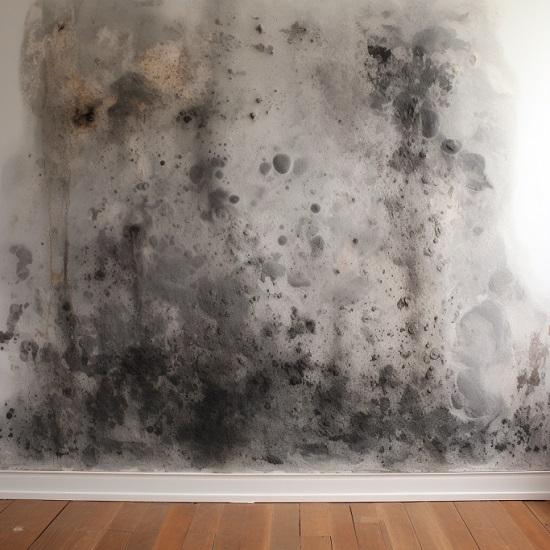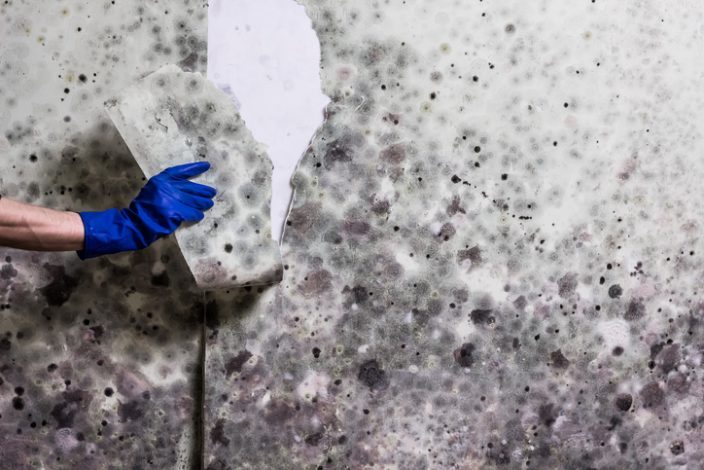Trick Tips for Effective Article Mold And Mildew Remediation
Effectively finishing mold remediation is a complex process that calls for attention to detail and adherence to certain protocols. These steps not only verify the success of the removal initiatives yet likewise contribute to protecting against future mold and mildew growth.
Inspection of Treated Locations
Upon conclusion of the mold removal procedure, a thorough evaluation of the dealt with locations is vital to make sure the performance of the remediation initiatives. This inspection serves as an essential action in the post-remediation stage to validate that the mold and mildew removal and clean-up procedures were effective in getting rid of the mold and mildew problem and recovering a secure indoor atmosphere. The assessment must be carried out by qualified experts who have the experience to evaluate the remediated areas carefully.
These consist of visual analyses to check for any type of indicators of mold growth or water damages, moisture levels to validate that the area is completely dry and totally free of excess humidity that might advertise mold and mildew re-growth, and air quality testing to make certain that the interior air is risk-free to take a breath. In addition, the inspection may entail making use of specialized tools such as wetness meters and thermal imaging cameras to discover surprise mold and mildew or moisture pockets that could lead to future mold problems if left untreated.

Dampness Control Measures
Efficient dampness control steps are essential for stopping mold and mildew growth and preserving a healthy and balanced indoor setting. To accomplish this, it is critical to deal with sources of dampness within the structure. Proper ventilation is vital to managing moisture degrees. Installing exhaust fans in kitchens and restrooms can assist get rid of excess moisture. Furthermore, utilizing dehumidifiers in wet locations can help in reducing humidity levels, making it harder for mold and mildew to flourish.
Consistently maintaining the structure and evaluating's outside can additionally protect against dampness intrusion. testing air quality after mold remediation. Making certain that seamless gutters are clear, downspouts straight water far from the foundation, and the roof remains in great problem can aid protect against water from permeating into the structure. Effectively securing doors and windows can also help keep dampness out
Any spills or leakages should be cleaned up and dried out within 24-48 hours to stop mold and mildew development. By implementing these moisture control steps, the threat of mold repeating can be significantly decreased, creating a much healthier indoor atmosphere.
Correct Air Flow Assessment
An important facet of ensuring a healthy indoor atmosphere article mold and mildew removal is performing a comprehensive evaluation of the ventilation system. Post Remediation Inspection near me. Correct air flow analysis plays a crucial role in preventing future mold and mildew development and keeping air high quality within the damaged space. Throughout the analysis, specialists examine the effectiveness of the air flow system, looking go for any type of blockages, leaks, or breakdowns that can hinder correct air movement. It is necessary to guarantee that the ventilation system is properly sized for the area it serves and that it meets market Discover More Here requirements for air currency exchange rate.
Moreover, evaluating the air flow system includes checking out the distribution of air throughout the location to identify any type of locations of bad blood circulation where dampness and pollutants can accumulate. Correct ventilation not only aids in controlling moisture degrees however also aids in getting rid of airborne mold spores and various other toxins, thus boosting general interior air quality. By attending to any kind of ventilation issues publish mold and mildew removal, residential or commercial property owners can develop a healthier and much more comfy setting for occupants while decreasing the danger of mold and mildew re-infestation.
Cleaning and Disinfection Protocols
To guarantee comprehensive mold and mildew removal, precise adherence to particular cleansing and sanitation protocols is important. Cleaning and sanitation methods play an essential function in the post-mold remediation phase to stop the recurrence of mold growth and ensure a secure and healthy atmosphere.
In addition, implementing precautionary procedures such as using mold and mildew preventions and maintaining proper ventilation can assist reduce the danger of future mold invasions. By adhering to rigorous cleaning and disinfection procedures, building proprietors can ensure the successful removal of mold and produce a healthy indoor environment for residents.
Tracking and Maintenance Plan
Carrying out a regular surveillance and maintenance strategy is necessary for making certain the lasting performance of mold removal efforts. As soon as mold removal is finished, it is vital to establish a surveillance schedule to review the success of the removal process.
In addition, developing an upkeep strategy is key to protecting against future mold problems. This strategy may include activities such as fixing plumbing leaks, improving ventilation, and controlling indoor moisture degrees. Regular maintenance not only aids in preventing mold yet also contributes to preserving a healthy and balanced interior environment. It is a good idea to record all surveillance and upkeep activities to track progress and make sure uniformity in the maintenance of the remediated locations. By implementing an extensive tracking and maintenance plan, the danger of mold and mildew re-emergence can be dramatically reduced, promoting you can try here a clean and safe living or working atmosphere.
Verdict
In final thought, effective message mold and mildew removal involves detailed evaluation of dealt with areas, application of dampness control measures, evaluation of appropriate air flow, adherence to cleansing and disinfection procedures, and facility of a surveillance and maintenance plan. These essential actions are necessary to guarantee that mold development is properly eliminated and avoided from recurring in the future. By following these guidelines, building proprietors can keep a secure and healthy and balanced setting for occupants.
Upon completion of the mold remediation procedure, a comprehensive examination of the treated locations is imperative to ensure the effectiveness of the remediation initiatives. These consist of aesthetic evaluations to inspect for any type of indications of mold and mildew development or water damages, wetness levels to confirm that the location is completely dry and complimentary of excess humidity that could advertise mold and mildew re-growth, and air top quality screening to guarantee that the indoor air is safe to take a breath. Furthermore, the evaluation might involve making use of specialized devices such as moisture meters and thermal imaging cameras to detect surprise mold and mildew or moisture pockets that can lead to future mold problems if left uncontrolled. By resolving any type of ventilation concerns post mold and mildew remediation, residential property owners can produce a healthier and extra comfortable environment for passengers while decreasing the threat of mold re-infestation.
